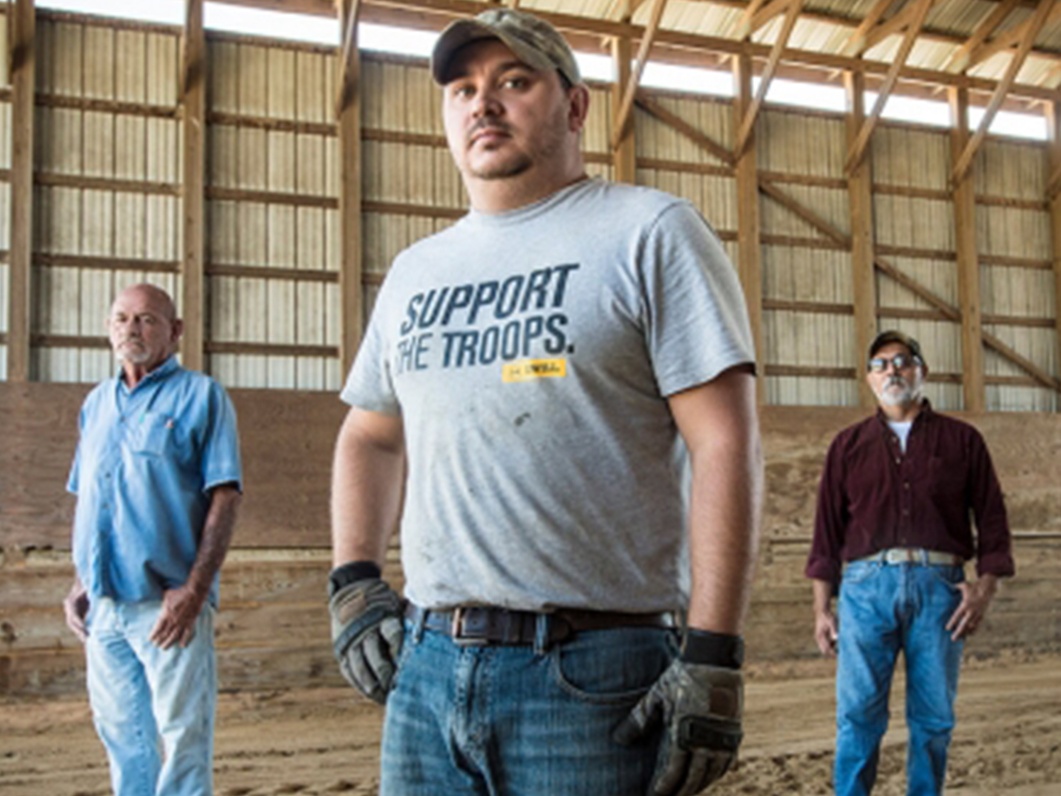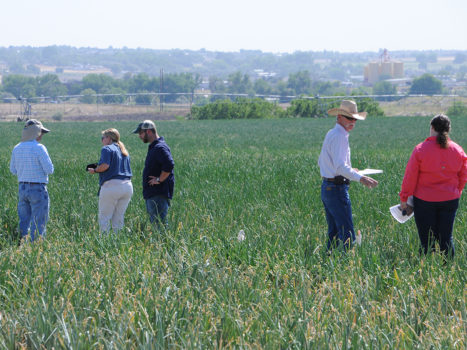Along with millions of others across the nation, we watched in humble gratitude on Nov. 11 as tribute was paid to those who did and who continue to put our lives ahead of their own. They are the service men and women of the United States’ armed forces, and we are forever in their debt.
We are also so incredibly proud that the enormous agriculture community of this nation is a generational home to millions of military families and a welcoming new home to veterans who are going into ag.
The programs that train vets and then connect them with employers are growing, and we want to share some of that information here as we acknowledge the true meaning of the eleventh hour of the eleventh day of the eleventh month, known universally as Veterans Day. The hour, day and month established on Nov. 11, 1919, as the world marked one year since the end of World War I. It was known then as Armistice Day, and it became an annual observance in this country by Congressional Resolution in 1926, and it was declared a national holiday in 1938. The name was changed to Veterans Day in 1954 – and each year we stop and remember that it is hallowed by the blood and honor of those who’ve served in our armed forces.
We wondered about the numbers of vets in the nation today, and a little research turned up some very important numbers from the U.S. Census Bureau at
https://www.census.gov/newsroom/facts-for-features/2018/veterans-day.html.
In 2017 there were 18.2 million military veterans in the United States.
The number of military veterans in the United States in 2017. A quick reference tool is provided at 2017 American Community Survey . Of that number 1.6 million were women.
And virtually every ethnicity could be found in the total mix – black, white, Hispanic, Asian, America/Alaska Native, Native Hawaiian/Pacific Islander among the highest represented.
There was also a wide age spectrum, with half the vets age 65 and older and just under 9 percent younger than 35.
That translates to more than 9 million workforce-age veterans in our nation.
What kind of jobs exist for veterans? A comprehensive look at ag careers and high-demand jobs/careers can be found at https://www.agcareers.com/newsletters/High_Demand_Ag_Jobs_for_Veterans.htm, where writer Kristine Penning of AgCareers.com writes that “… 83% of agricultural employers agreed that military professionals and veterans have experiences and transferable skills that make them a good fit for the agricultural industry.” She goes on to list seven high-demand ag jobs for military vets, starting with logistics.
She says that military vets and professionals are “calculating, quick on their toes, and organized. This is the perfect combination for a career in logistics and supply chain management.” The link for a more detailed look is Learn the educational requirements and employers of logistics professionals.
The second high-demand job she describes is Information Technology, noting vets are “a perfect fit due to their exposure and skills with technology.” More info can be found at IT Configurators, IT Web Developers, Software Developers, IT Specialists, IT Programmers, IT Analysts, and Precision Agriculture Specialists.
Third is mechanical: More info at Ag Mechanics Pathway in the AgCareers.com Career Profiles.
Fourth is human resources because vets “know better than anyone the importance of teamwork and loyalty. Click on College Recruiter, Corporate Recruiter, HR Manager, or an HR Generalist.
Fifth is safety, with careers continuing “to accumulate in agricultural companies, as safety is now more than an ever an utmost priority. Check out Occupational Health and Safety Manager, responsible for policy, procedures and measurement of occupational health and safety in the workplace.
Sixth is animal caretaker, with opportunities abounding. Check out Herdsmen or Breeding Manager in the Animal Science Pathway from the AgCareers.com Career Profiles.
And seventh is sales, again bringing the vets’ “sense of loyalty and teamwork” to the fore. “Agribusiness is teeming with opportunities in sales in various subindustries. Visit AgCareers.com to find an opportunity perfect for you,” Penning writes.
AgCareers.com’s Ag Warriors program works with leading agricultural employers who have pledged to actively recruit military veterans into their organizations. Learn more about how Ag Warriors can benefit you.
In addition to providing info to vets, AgCareers also has this link for employers looking to hire veterans: https://www.agcareers.com/ag-warrior.cfm.
And there’s a comprehensive resource page for veterans can be accessed at http://www.agrability.org/resources/veterans/, and for employers looking to hire veterans. This site has scores of links that cover all aspects of ag – it’s a wealth of information.
The USDA is also a good resource for veterans looking to further their connection to ag or to begin a career. Go to https://newfarmers.usda.gov/veterans for an overview and to
https://www.usda.gov/our-agency/initiatives/veterans for some specific info. The USDA notes that, “Preparedness and defense are critical to America’s food and agriculture sectors and to sustaining and growing rural America…” and “… the U.S. Department of Agriculture is looking to military veterans across the country to fill the roles that keep America’s food supply safe and secure, preserve and strengthen rural communities, and restore and conserve the environment.” Working to “ensure that veterans looking to return home, or start a new career on a farm or in a rural community have the tools and opportunities you need to succeed,” the USDA site is a valuable tool for those interested in agriculture. Check out https://www.usajobs.gov/Search?d=AG&d=AG&hp=vet&hp=public&hp=mspouse&p=1.
One USDA link that caught our eye was for “Hands-On Job Training for Veterans” that is in collaboration with the Department of Labor. Some valuable links are Agricultural Commodity Graders, a 12-month training program through USDA’s Agricultural Marketing Service, starting at GS-5/7, and Wildland Firefighters, a 3,000 hour on-the-job learning program through USDA’s Forest Service with available positions including GS-3, 4/5, and 5
Information about these apprenticeships and other Department of Labor
For additional information, contact veterans@usda.gov and go to https://www.usda.gov/our-agency/initiatives/veterans/veterans-and-employment.
We found another great site at https://www.blogs.va.gov/VAntage/61200/usda-vets-farming-agriculture/ that shares “Veterans have the opportunity to grow with USDA and farming resources.” This was posted in July by Steven Clipp and had upwards of 200,000 views.
In the blog, Clipp writes, “Few pairings more closely align than Veterans and farming. The skill sets developed in military service match many of the characteristics of a successful agricultural professional. Whether it’s a sense of duty, responsibility and accountability for completing the mission, or being organized and disciplined, Veterans typically transition naturally into farming, ranching, and other agricultural opportunities.” Amen!
In 2018 USDA’s Farm Service Agency “provided $64.5 million in direct and guaranteed farm operating loans to Veterans—and Veterans have preference.” The piece reads, “Veteran farmers and ranchers receive certain preferences under most USDA farm credit and farmland conservation programs. They are eligible for increased cost share assistance, additional financial incentives, and funding preferences for engaging in conservation efforts.”
We also read that “approximately 5 million [veterans]… live in rural areas,” said Bill Ashton, USDA Military Veteran Agricultural Liaison. “They can be a positive force for our communities. USDA is committed to making our programs accessible to help Veterans start or grow a career and maximize the potential talent of this population.”
We’ve really scratched the surface of what’s available to veterans and also to employers, and we close with a Texas link that also matches the two population sectors: https://farmvetco.org/.
Again, our thanks to the heroes who’ve chosen to serve. And… God Bless America.
Featured image: USDA stock photo


